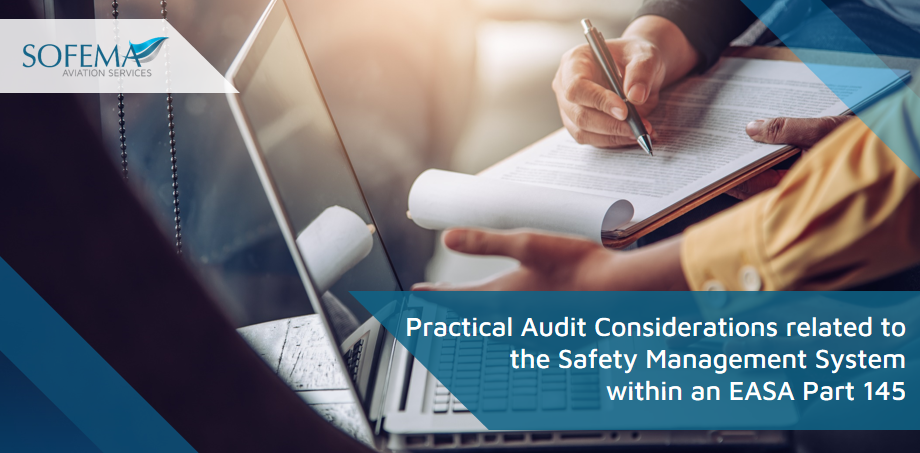Sofema Aviation Services (SAS) www.sassofia.com considers the typical high-level expectations related to the demonstration of an effective Safety Management System within an EASA Part 145 Organisation.
Introduction
A practical audit related to Safety Management Systems (SMS) within an EASA Part 145 organization would typically focus on several key areas to ensure the effectiveness and compliance of the Safety Management Systems (SMS) in practical delivery.
Typically the audit will look for evidence that the Safety Management System (SMS) is not just a set of documents, but a living system that is actively practiced and ingrained in the organization’s operations and culture.
Here are some of the aspects that such an audit would likely expect to see:
- Documentation and Records: Auditors will expect to see comprehensive documentation that outlines the SMS policies, procedures, and processes. This includes safety manuals, risk management procedures, and records of safety meetings and training sessions.
- Risk Management: A core element of Safety Management Systems (SMS) is risk management. The audit will assess how the organization identifies, evaluates, and mitigates risks associated with maintenance activities. This involves reviewing risk assessments, mitigation strategies, and how these are integrated into daily operations. (Consider the role of the Risk Register)
- Safety Culture: Auditors will evaluate the safety culture within the organization. This includes how safety is communicated and emphasized across all levels of the organization, from management to the shop floor. Evidence of a positive safety culture includes regular safety discussions, open reporting of issues, and visible commitment from leadership.
- Training and Competence: The audit will review training records to ensure that personnel are adequately trained and competent in SMS principles and their specific job functions.
– This includes initial and recurrent training on safety policies, procedures, and best practices.
- Safety Performance Monitoring: Auditors will expect to see systems for monitoring and measuring safety performance. This includes the use of safety metrics, incident and accident investigations, and regular reviews of safety performance.
- Continuous Improvement: An SMS is not static; it requires continual assessment and improvement. The audit will evaluate how the organization identifies areas for improvement in its SMS and implements changes.
- Emergency Preparedness: The organization’s preparedness for handling emergencies will be assessed. This includes reviewing emergency response plans and how these plans are integrated into the SMS.
- Compliance with EASA Regulations: Finally, the audit will verify compliance with EASA Part 145 regulations and any other applicable regulatory requirements. This involves checking that the SMS aligns with regulatory standards and requirements.
In summary, the audit will look at the importance of a practical and effective implementation of an SMS, ensuring not only compliance with regulations but also the fostering of a proactive safety culture within the organization.
Follow this link to our Library to find & download related documents for Free.
For further guidance please see www.sassofia.com or www.sofemaonline.com
For comments or questions please contact team@sassofia.com
Tags:
EASA Part 145, EASA SMS, Risk Management, Safety Culture, EASA regulations, Aviation Safety Management System, EASA Part 145 Organisation, SAS blogs, Safety Management Systems (SMS)





